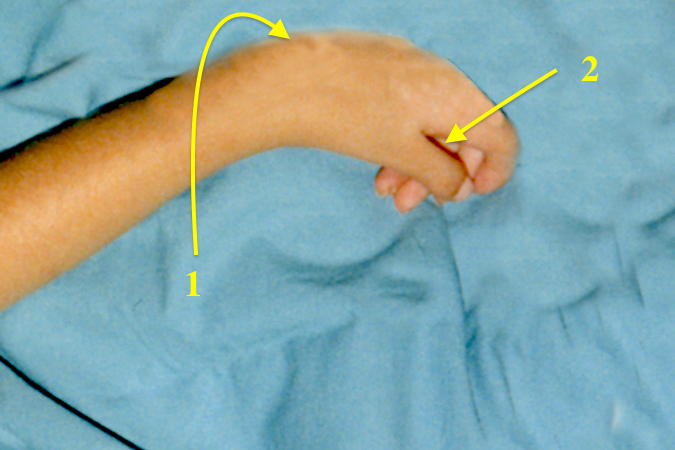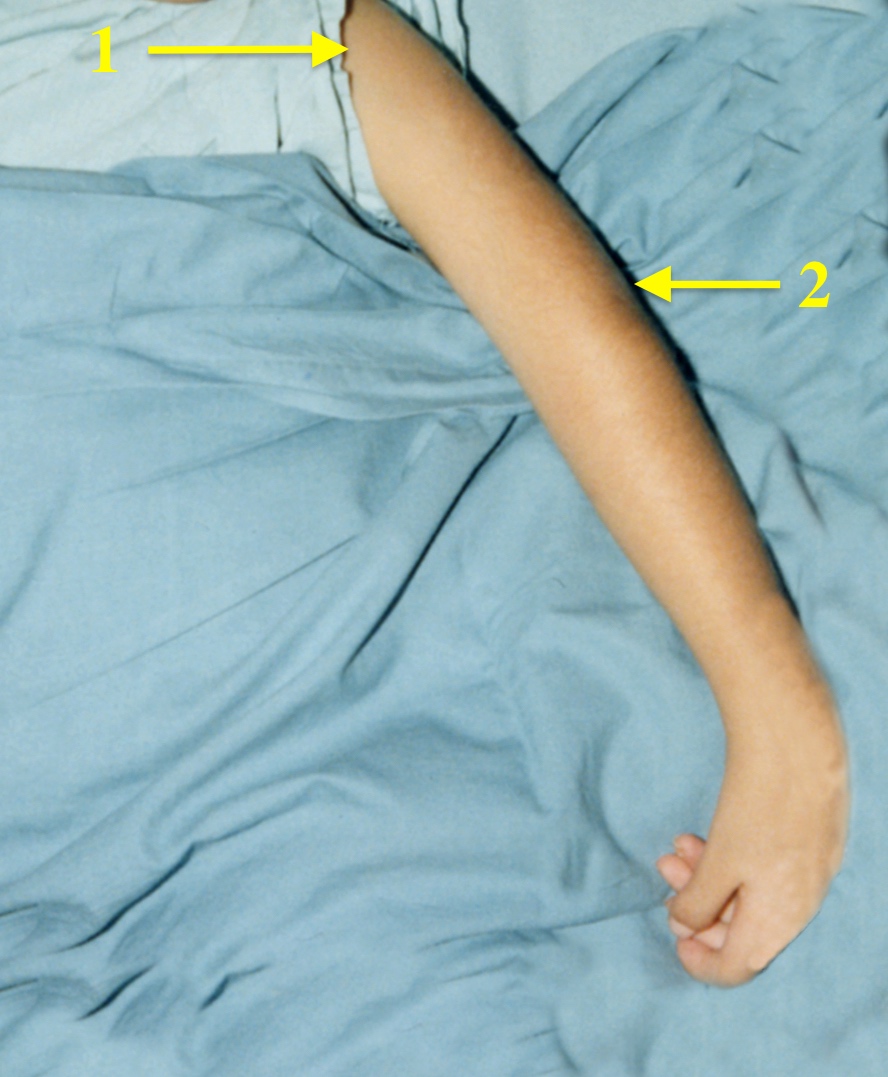Arthrogryposis - Upper Extremity
-

Arthrogryposis wrist and Hand: 1. Wrist in classic palmar flexion and ulnar devotion position; 2. Hand with thumb-in-palm deformity and mild wind blown fingers.
-

Arthrogryposis Shoulder and Elbow: 1.Shoulder internally rotated; 2. Elbow with an extension contracture
